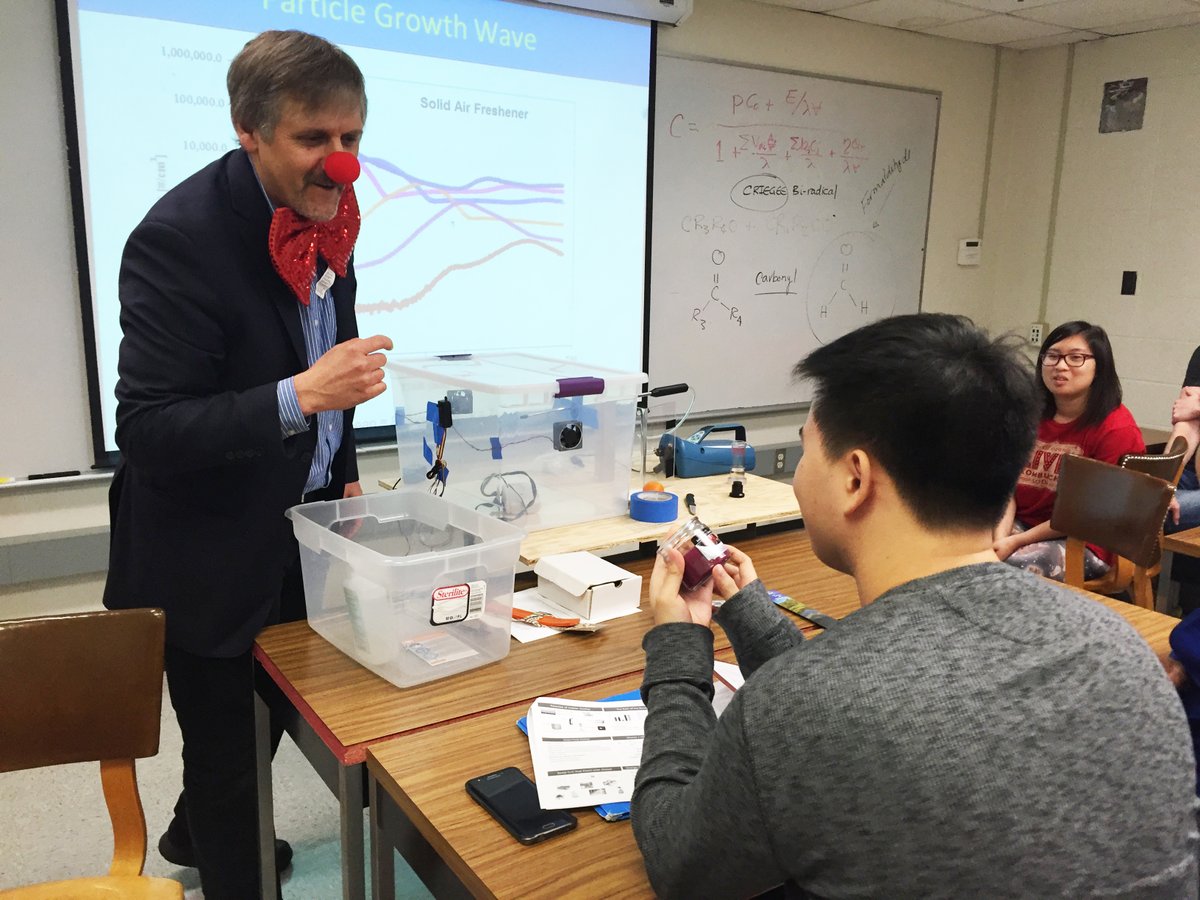
1/ Automobiles and Intake Fraction. Since cars are back in the news I thought I would retweet this model result I offered in early April 2020. I focused only on 1 micron particles & accounted for windows completely closed & cracked slightly open.
https://twitter.com/CorsIAQ/status/1246323018780930048
2/ Related air exchange rates were based on experimental results in literature for mid-sized sedans. Particle deposition to indoor surfaces were accounted for, as the surface to volume ratio in a 3 m3 cab is large. An important outcome was the intake fraction (IF)
3/ Here, IF is the number of particles (or virions in collective particles) inhaled by a receptor DIVIDED BY the number or particles (or virions in collective particles) emitted by an infector.
4/ Integrated over the two hour drive (in this example) the IF for all windows closed & a receptor at rest is 0.08 (8% of what comes out of the infectors respiratory system ends up in the respiratory system of the receptor). 8%! That is a very high intake factor.
5/ With additional ventilation from cracking a window open drops the IF to 0.012 (1.2%) still relatively high. Can get lower by opening more windows.
6/ An important point is that the intake fraction is not dependent on the amount emitted, and so the value is applicable to whatever the number of particles (or virions in particles) are being shed by an infector. Emission rate can be multiplied by IF to get at inhalation dose.
7/ In this analysis the IF ranges from approx 0.01 to 0.1. For a wide range of indoor spaces in buildings IF ranges from 0.0001 to 0.001. Intake fraction can be lowered w/ higher ventilation and/or better filtration (including portable HEPA filters), as well as UVGI for virions.
8/ Note that for large outdoor sources of pollution (think busy highways, power plants) with a receptor on the order of hundreds of meters to kilometers downwind the IF is typically on the order of 1 billionth to 1 trillionth.
9/ For the very special case of an inert pollutant (non-reactive and not removed by controls or surfaces) at steady-state IF = respiratory minute volume / volumetric flow of outdoor air through indoor space. IF = Qb/Qv
10/ I am working on a blog related to the use of intake fraction as a conceptual and quantitative tool for assessing indoor environments where exposure to SARS-CoV-2 may occur.
11/ Until then, I have posted some old handwritten course notes on intake fraction at corsiairquality.files.wordpress.com/2020/10/intake…
Apologies for sloppy writing. Enjoy the analogy of candles vs power plants in terms of inhalation of fine particles. Candles 👎. I know, different compositions.
Apologies for sloppy writing. Enjoy the analogy of candles vs power plants in terms of inhalation of fine particles. Candles 👎. I know, different compositions.
12/ Also, if everyone in the vehicle wears masks the intake fraction is reduced on two fronts, less emissions from the infector and less inhalation of virus-laden particles by receptor. To be included in blog. Just do it!
• • •
Missing some Tweet in this thread? You can try to
force a refresh





